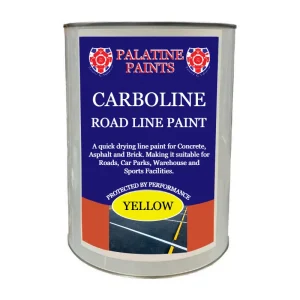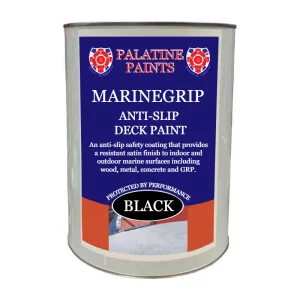All Blogs, Varnish and Wood Oils
Wood oil: Why use it and which one to choose?
Wood oil…why would you use it? Why not varnish?
Wood oils act as a protective, decorative and water repellent finish for wood. Oils penetrate deep, nourishing the wood and replenishing its natural oils. They also enhance the natural grain of wood and generally have a satin or lustre rather than a gloss appearance.
While they often appear expensive, wood oils provide long term protection and a little will go a long way if applied correctly and with patience.
Let’s dive in!
Firstly, you must be aware that wood oil is not always the right product for your wood. Exterior wood that needs protection from mould, fungus and mildew may fare better with the application of a protective treatment, preserver or even a varnish. Varnish can also be applied onto previously painted, stained or varnished surfaces (after a little sanding).
Oils on the other hand, usually have to be applied to bare, natural (or sometimes stained) wood. Varnish gives a hard coating to wood, whereas wood oils penetrate deep into the wood itself.
The process of applying oil is sometimes considered more laborious and time consuming than coating with a varnish or protective treatment. Note varnish can often be applied over certain wood oils for extra protection. Back to oil, let’s start with historical linseed oil. Why? Because it’s probably the most interesting and is actually a component of many other wood oils.
Linseed Oil – traditional and fascinating!
Linseed oil is extracted from the ripened and dried seeds of the ‘flax plant’ and has been used for centuries. Nowadays you are more likely to find it blended with other ingredients (solvents, resins, other oils). It is used on its own however, and this is when you’ll see it referred to as ‘raw linseed oil’. Linseed oil has good water resistant and preservation qualities.
Often referred to as a drying oil (it hardens when exposed to air) raw linseed is actually very slow drying.
This can be an advantage – in ‘brushed-on’ oil based paint, for example, where it helps provides a smooth finish.
Cricket bats and linseed oil?
You’re not wrong if you immediately think of cricket bats when you hear the term linseed oil. Linseed oil provides protection, allows the wood to retain moisture and does not shrink. Unlike varnish, which coats wood with a hard surface, linseed soaks into the pores of the wood.
Because it soaks into the wood so well, the natural surface of the wood is retained. Some say this also helps gives the bat better surface friction. So, the image of a chap lovingly oiling his bat, waiting a day for it to dry and then repeating, isn’t just a nostalgic myth!
The “knocking in” process allows the wood fibres to compress and knit together.
Raw linseed oil vs boiled linseed oil
Raw linseed oil is linseed oil in its natural state, unblended with other ingredients such as driers or thinners. It is used where a quick drying time is not needed, traditionally used on cricket bats, some musical instruments and chopping blocks etc.
Raw linseed oil is primarily used in the production of boiled linseed oil. Boiled linseed is not boiled (despite its name) but raw linseed oil which has been blended with driers (solvents) which increase its drying time. Boiled linseed oil is used for oiling most types of bare wood with the exception of oak and also for some other porous substrates detailed below.
Uses of linseed oil
Boiled linseed oil penetrates unsealed wood leaving a natural, water resistant finish with a slightly enhanced colour that darkens slightly with age.
As well as wood, it is used as a traditional treatment to seal terracotta tiles/concrete floors/other porous substrates.
Mixed with burnt sand it can form a caulking to fill gaps between timber and masonry.
As the cricket bat story demonstrates, used on wood it has good water resistant properties and does not shrink when hardened. If you want to show the natural grain and beauty of your wood, linseed oil allows for this while simultaneously protecting and nourishing it.
Depending on your tastes, linseed oil also has a great smell.
Danish oil
Like linseed oil, Danish oil penetrates into the wood to nourish and protect it. Its contents vary depending on the manufacturer. Here in the UK however, it is usually based on tung oil or linseed oil mixed with other ingredients such as resins and other oils.
Because it’s often a blend of oil and varnish, Danish oil gives a lustrous, slightly non slip finish to wood and can be used on most wood types.
As its name suggests, it is used a lot in Scandinavian style furnishings, doors, panelling and wood turning. Reasonably good at resisting stains, you’ll also see it used on natural wood worktops, chopping blocks, banisters, spindles etc. In fact, the image at the top of this post is an oak staircase treated with Danish Oil.
Even if stains or light scuffs occur, they’re easily rectified with light sanding and re-application of more oil.
Several coats are usually applied, allowing between 6 and 24 hours drying time between each coat.
Teak oil
Teak oil, like the Danish oil, is made from a combination of different ingredients, usually containing linseed oil, varnish and white spirit. None of its ingredients come from the teak tree and it can be used on woods other than teak (but mainly hardwoods with similarities to teak).
Teak oil is known for its use on the wooden trims, decking and furniture of boats and needs regular re-application to maintain its looks and protective qualities.
Teak oil penetrates unsealed wood and is good for leaving a natural matt to satin finish on traditional hardwood furniture. Regular use will nourish, revive and feed wood and reduce the weathered appearance of wood giving a satin finish.
Decking oil
Again a blend of different oils, decking oil is designed for outdoors, giving protection to decking boards, decking tiles and balustrades. With non-flaking and water repellency qualities to help prevent timber from splitting and cracking, it’s applied to the bare wood.
Decking oil often has a stain included so you can choose the right shade for your outside space. The decking oil we supply, oils, protects and stains as an all in one treatment, with built in UV protection. Generally decking oil gives a translucent finish.
How to apply wood oils
The application process is similar for most oils, with a few variations. This is how we apply each of the oils we supply:
Boiled linseed oil
- Use on new or bare woods, dilute the first two coats with 30% turps/white spirit. Ensure the wood to be treated is dry, free from dirt, wax etc.
- Wipe oily woods with white spirit before application.
- Apply by brush or lint free cloth – after 10-15 minutes, remove excess oil with a lint free cloth.
- Apply a minimum 3 coats leaving 24 hours between each coat and allow 7 days (or until dry) after the final coat before using the treated item
Danish Oil
- Ensure the surface is smooth and clean (white spirit can be used to remove grime/grease etc).
- Apply with a brush or lint free cloth. Allow the oil to penetrate and completely dry (up to 24 hours) before applying the second coat.
- Several coats will usually be needed.
Teak Oil
- Clean the area thoroughly (use a good cleaner that will remove lichen, algae, moss).
- Apply 2- 3 thin coats of oil with a brush or lint free cloth leaving 12-24 hours between each coat and a minimum of 1 day after the final coat before using the treated item.
- A prior application of suitable wood preservative treatment can be used for exterior surfaces.
- Allow to dry before applying teak oil.
Decking Oil
For old decking, you need to remove previous finishes like paint and varnish. The deck needs to back to bare wood before oiling. Check the weather forecast…oil should be applied in dry conditions.
- Shake the oil well and apply with a good quality roller or brush ensuring any excess oil is removed (a soft lint free cloth is best for this).
- Usually one coat should be sufficient depending on the brand you choose but if a second coat is needed, wait 12 to 24 hours before applying.
Spontaneous combustion!
Cloths used to apply any of the above oils carry a risk of spontaneous combustion if left lying about it a pile.
Allow them to dry flat or soak in water before disposing of them. As well as paints, we supply a range of quality oils here at Palatine Paints.
Here are some quick links if you need them:
- Carbolin Boiled Linseed Oil,
- Barrettine Danish Oil,
- Barrettine Teak Oil
- Barrettine Decking Oil all-in-one treatment


In what order of application
1 teak oil
2 wood dye
3 polyurethane varnish
Any help appreciated
Usually applying a wood stain would be done first. A water based stain will apply more evenly and will not seal the wood in the same way as an oil based stain which will make applying the teak oil easier. Make sure the teak oil you use is compatible with the type of wood stain you’ve chosen. Most varnishes can be applied over teak oil. If you are using it for an exterior item and you choose a polyurethane varnish, check with the manufacturer or supplier to ensure that it is UV stable and therefore suitable for external use.